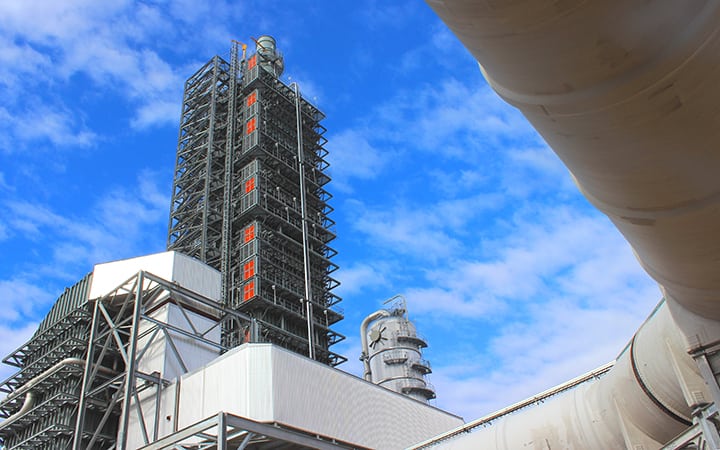World’s Largest Post-Combustion Carbon Capture Project Completed
http://www.powermag.com/worlds-largest-post-combustion-carbon-capture-project-completed01/10/2017
Petra Nova—a commercial-scale post-combustion carbon capture project designed to remove more than 90% of the carbon dioxide (CO2) from a 240-MW slipstream of flue gas off of the W.A. Parish generating station in Fort Bend County, Texas—has been completed, according to project partners NRG Energy Inc. and JX Nippon Oil & Gas Exploration Corp.
The facility (Figure 1), the largest installed on an existing coal-fueled power plant to date, captured its first CO2 on September 19, 2016, and completed final performance acceptance testing on December 29, 2016. The system had already captured and delivered more than 100,000 tons of CO2 to the West Ranch oilfield for enhanced oil recovery (EOR) when the completion announcement was made on January 10, 2017.

1. Petra Nova. Sixteen-foot diameter ductwork takes flue gas from the coal plant to the carbon capture facility where the CO2 is removed from the flue gas by the amine solution in the tall absorption tower and then separated from the amine as 99.9% pure CO2 in the smaller regenerator tower to the right before being compressed and delivered to the oil field. Courtesy: Business Wire
“Completion of the Petra Nova project is an important milestone in our quest to help ensure reliable, affordable and increasingly cleaner energy from fossil fuels,” said Mauricio Gutierrez, president and CEO of NRG Energy.
Petra Nova is expected to capture about 1.4 million metric tons of CO2 per year. Hilcorp Energy Co., operator of the West Ranch oilfield, will use the CO2 to boost production at the field. The company expects production will increase from about 300 barrels per day before beginning EOR to as much as 15,000 barrels per day using captured CO2 delivered via an 80-mile-long pipeline....

2. Process flow for amine absorption. The Petra Nova project demonstrates the ability of Mitsubishi Heavy Industries’ CO2 capture technology to remove 90% of the CO2 emitted from a 240-MW flue gas stream. Source: National Energy Technology Laboratory